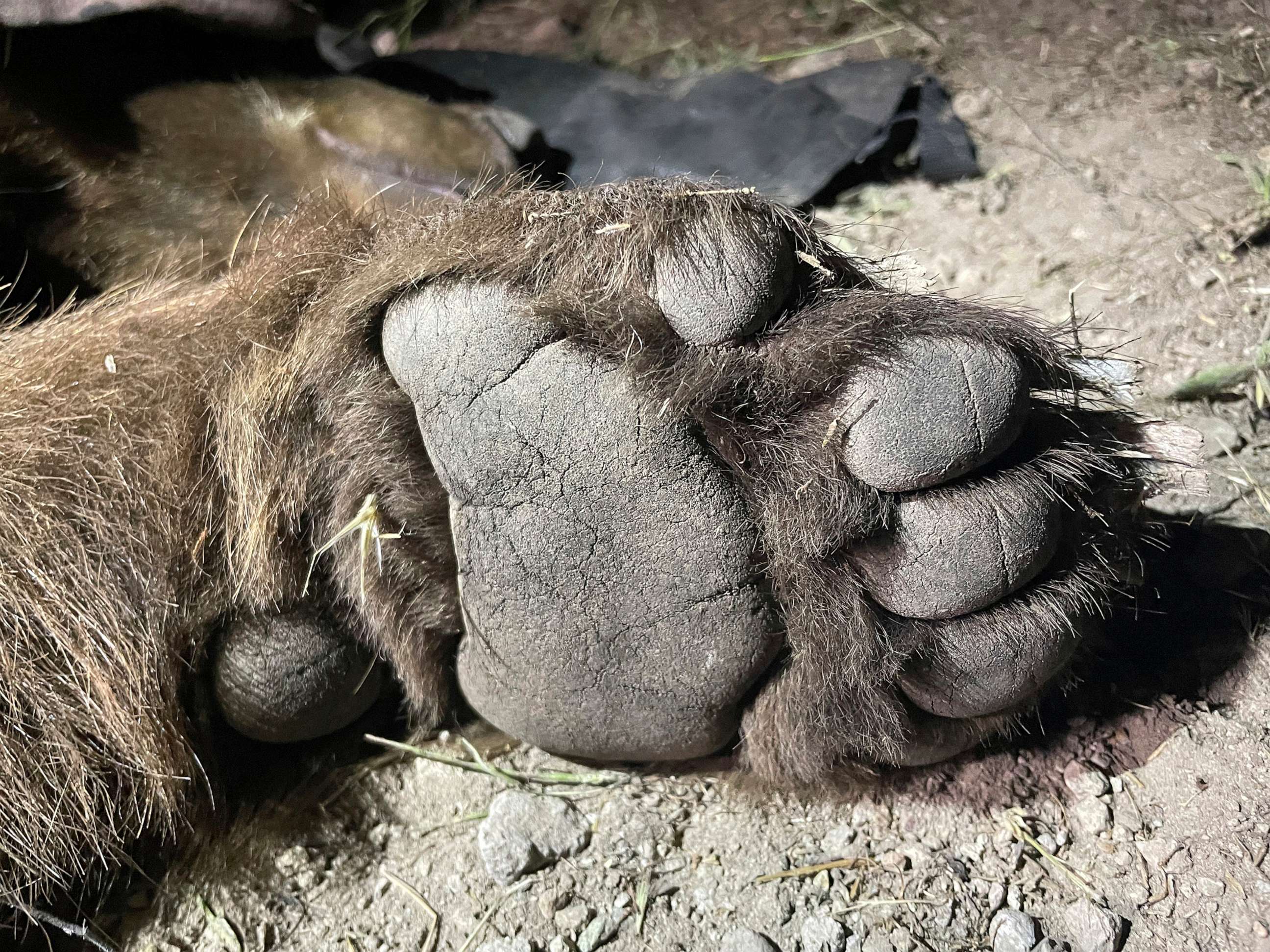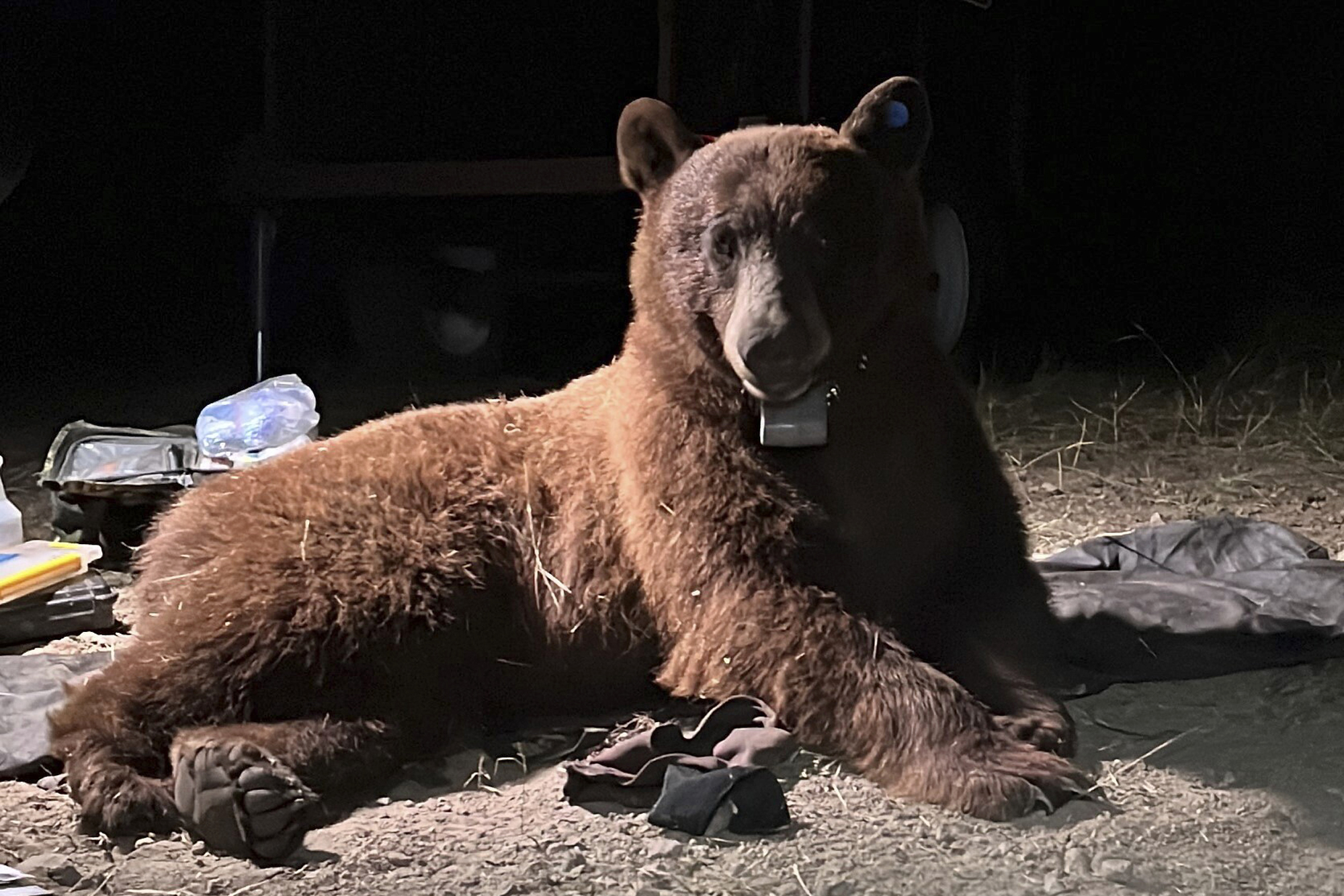Researchers find black bear living in the Santa Monica Mountains
The bear, dubbed "BB-12," is believed to be about 3 or 4 years old.
Biologists in Southern California believe they have found the only bear to currently live in the Santa Monica Mountains, according to the National Parks Service.
Biologists captured and radio-collared a 210-pound black bear in a natural area of the western Santa Monica Mountains, south of the U.S. Highway 101, on April 23, the National Parks Service announced on Wednesday.
The bear, dubbed "BB-12," is believed to be about 3 or 4 years old, biologists said. The nearest population of black bears is in the Santa Susana Mountains, about 50 miles north, according to the NPS.
Bears have occasionally been documented in the Simi Hills and in the Santa Monica Mountains but there is no evidence of a breeding population in either area, biologists said.

This is the first time biologists were able to capture and radio-collar a bear in the Santa Monica Mountains.
BB-12 has likely been living in the region for at least two years, Jeff Sikich, lead field biologist of the Santa Monica Mountains National Recreation Area's two-decade mountain lion study, said in a statement.
"This seems to be our first resident bear in the 20 years we have conducted mountain lion research in the area," Sikich said. "It will be interesting to see how he shares the landscape with our other resident large carnivores."

Bear sightings in the region are "rare," according to the NPS. BB-12 may be the same bear spotted "lumbering around" Reino Road in Newbury Park in wildlife trail cameras in July 2021, according to the NPS.
Ever since, trail cameras have been capturing images of a bear in half of the Santa Monica Mountains -- from Malibu Creek State Park to the range’s western border in Point Mugu State Park.
Biologists performed a full workup on the bear, including collecting biological samples, taking various body measurements, attaching an ear tag, conducting a physical exam and fitting a GPS radio-collar around its neck, according to the NPS.
Bears are omnivores and can live between 15 and 25 years. As it gets older and looks to mate, it may migrate back north, Sikich said.
"With the radio-collar, we can track its movements and hopefully know where it may attempt to cross the freeway," Sikich said. "This can help us better understand habitat connectivity for wildlife in the area."

The last bear documented in the region before BB-12 was in 2016, when another bear was spotted on trail cameras three times over three months in the central portion of the mountains but then never detected again.
Grizzly bears formerly roamed the entire state of California but became extinct in the early 1900s. Black bears are not native to Southern California.
Other black bears have occasionally been spotted through the years north of U.S. Highway 101 in the Simi Hills, including a bear spotted near Westlake High School in Thousand Oaks in 2006, according tot he NPS.
They will eat whatever is available, primarily fruits, nuts, roots and insects. Black bears will also eat small animals, including deer, human food, pet food, unsecured trash as well as dead animals they find.

Black bears rarely become aggressive when encountered and attacks on people are uncommon, according to the NPS. Humans who encounter black bears are advised to keep a safe distance and slowly back away and not run or make eye contact.
"Let the bear know you are there," the NPS said. "Make yourself look bigger by lifting and waving your arms and making noise by yelling, clapping your hands, using noisemakers, or whistling."
ABC News' Phaedra Singelis contributed to this report.




